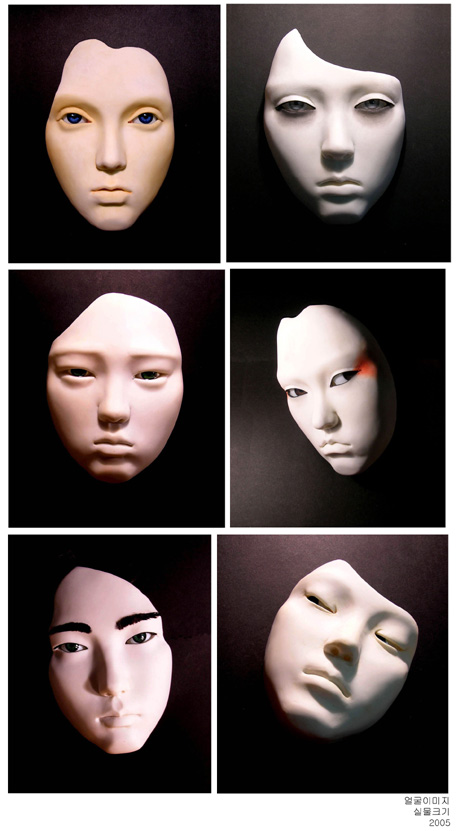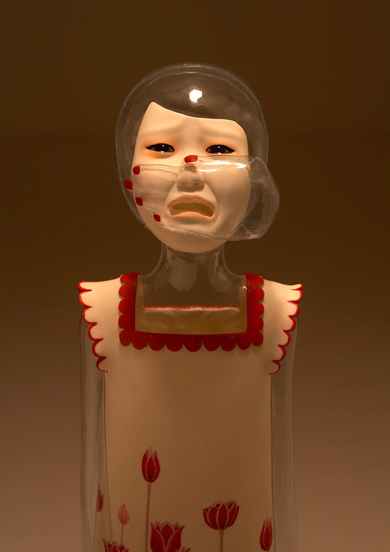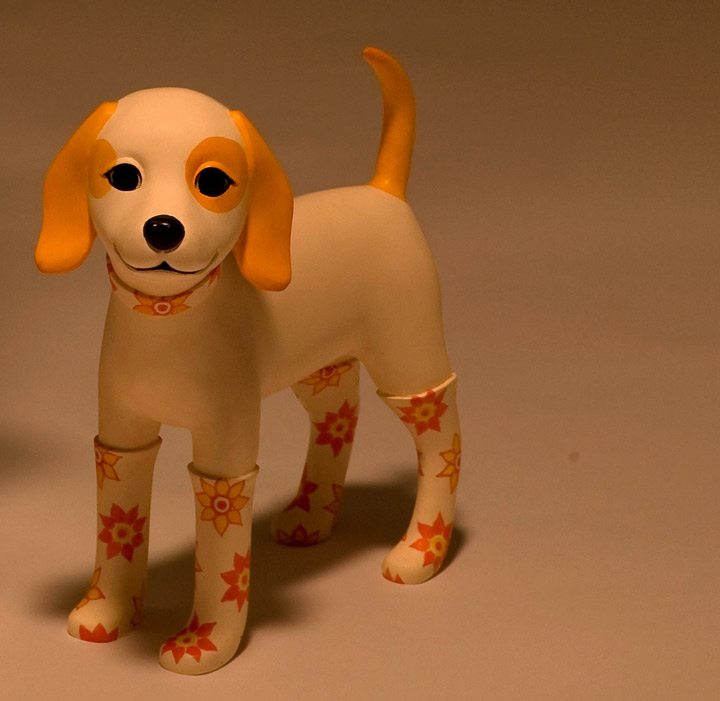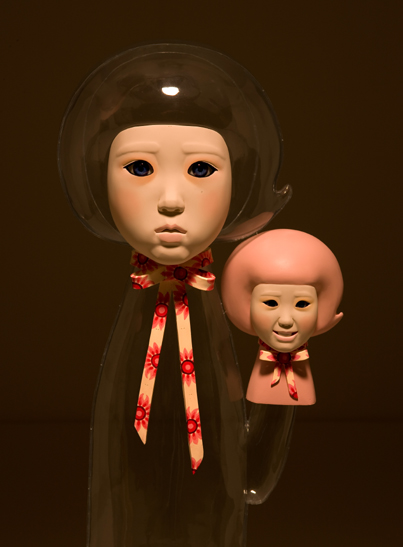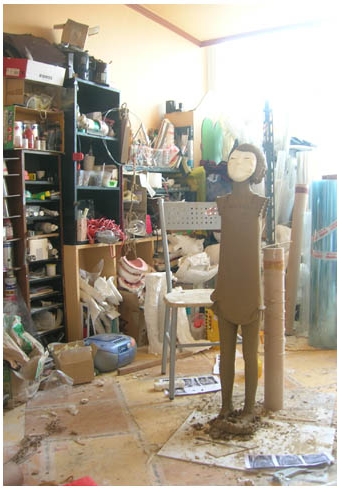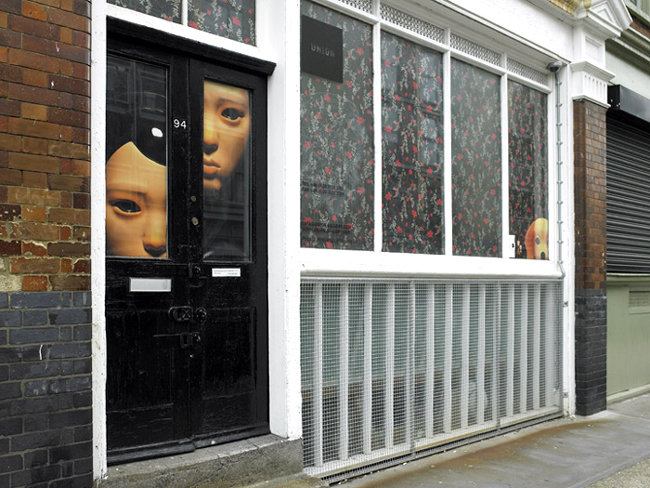If you remember, we were quite intrigued with Jin Young Yu’s transparent sculptures that were displayed at the Pulse Fair at Art Basel Miami last year. We were lucky enough to be able to interview her because of the efforts of AM friend Stella Im Hultberg (interviewed), who provided the translation for the Korean sculptor as well as added some questions of her own. Check out the interview after the jump.
Arrested Motion (AM): Can you tell us a little about your work and what kind of message you are trying to convey to the reader?
Jin Young Yu (JYY): My works are about the “invisible people.” I wanted to talk about the stories of the people who said, “I definitely don’t know them, but they knew me so well. They said they worked with me for over a year. To me, that person was a transparent existence that neither did or didn’t exist.”
It was too simple to define them as “the alienated people” or “the depressed people”. Instead, I thought that I, or we, could easily be one of them. My works are about people who, instead of getting along with others, choose to keep a distance from them, and be invisible or be left alone unconcerned. Instead of trying to fit into the world, they climb into a space of their own and reject other people’s intrusions.
My works feign expressionless faces. They are holding their tears back and swallowing them, or they try to put on a cool face despite the traces of tears on their faces. Or simply, they seem to have something hiding behind the hurried pretense of their expressionless faces. Looks on their faces that don’t make people approach them with ease – a subtle look of suspicion and caution keeps others from easily approaching them.
AM: Your work seems so finished and perfect. Do you have any formal art training or schooling?
JYY: If you look at my blog, my earlier works are not perfect at all. The clear bodies had wrinkles at the seams, and the finishing on the masks were imperfect as well. Having worked on this kind of art for years, I’ve developed techniques and processes that makes the work more efficient for me.
I did go to college and also grad school, but I was never taught how to do the works I’m doing now. The clear PVC body method is a process I’ve created on my own. Nobody, that I know of, is working with these materials or techniques currently. The faces are also of materials that that sculptors typically don’t use. So, most of my early works were all experiments, and I had to observe the preservation qualities and safety of the works for about 3-4 years before being able to sell them.
AM: Everyone who saw your amazing sculptures at Art Basel were curious as to how they are produced. Can you tell us a little about your creative process?
JYY: Since my works are about “invisible people”, I wanted complete transparency. Generally, I don’t regard glass or clear plastic as perfectly transparent. For example, if you put a flower patterned paper behind a clear drinking glass, the flower pattern will be seen warped to the shape of the glass. I had to research the perfect material for a long time because I wanted complete transparency. I needed something transparent that represented the shell modern day people. So, I chose PVC after seeing it on some laminated photos and cards. It took many trials and errors trying to figure out how to infuse 3-dimensionality to this material.
The process goes:
I sculpt (out of clay) a human form and make a plaster cast of it. After making a mold out of the plaster cast, I lay on sheets of PVC, apply heat to it, and form the sheet to fit the plaster mold. I have to press down on the PVC along with heat until the PVC completely conforms to the plaster mold, which takes an incredible amount of time.
AM: Though we love your sculptures, are there any other mediums you work in? Painting? Drawing? Also, have you or do you plan to ever make even larger or smaller sized works?
JYY: Currently I’m only doing sculpture. I am interested in painting as well, but I think I need some practice. Rather than creating painting as my work, I think it’d be good to paint a background to the clear works I’m creating now, showing sculpture and painting together.
My works are full scale. I’m making the adults in real adult sizes, children in real children sizes. I do want to maybe make them much larger than life, or much smaller, but I think that won’t happen till a few years later. I still have a lot to create and express through the 1:1 scale I’m working in right now.
AM: Many of our readers have commented on how adorable your dog sculpture is. Have you ever thought about mass producing something like that, although we know that some artists are against ever mass producing their work.
JYY: There are quite a few people who love the dog. When I make animals, they’re often more popular than the real main characters (the clear people). It’s possibly because the dogs look more prominent and noticeable (they’re not transparent, the people figures are). But, animals only make sense and add to the story when they’re in context with the people figures. So they’re a part of the set of the works with ‘people’, and I don’t have them for sale separately.
AM: We notice that many of your sculptures are arranged in family groups. Is family important to you? Any reason for this arrangement?
JYY: I use families as a device for the stories I want to tell.
My earlier works were not family units – they were all made and installed as individuals. Installations were often done in galleries with a lot of corners and columns. I would hide the sculptures behind the columns, corners, or dark areas of such galleries. People would come into the gallery thinking it was empty, and accidentally would discover the works here and there.
It was only later that these individuals started forming a family for me. I’ve created a situation of a family that doesn’t like to mingle with people but ended up being in a position to have guests over. To seem like a happy family, they’ve all lined up to greet the guests, and are wearing their best clothes. They have implements and tools to hide their true feelings as well (a smiling doll on the girl, smiling hair clips, masks, etc).
AM: What do you draw inspiration from? Any artists that you admire?
JYY: My works are a reflection of my own personality. I prefer staying home rather than going outside, and I tend to be quiet about going anywhere if I do go out. If I get invited to a party, I tend to stay in the corner quietly and come home. The fake pleasantries and insincere conversations often make me uncomfortable.
Then I realized that there are quite a bit of people like me, who understand my works very easily. I make my works thinking of ways to be the most inconspicuous to others, how to blend in.
AM: Any other hobbies?
JYY: I don’t I have other hobbies. Just working on these sculptures take such a long time, in order to show anywhere in the year I have to be always working on them. I know there are a lot of other fun things in the world – but if I lose myself in other fun things, I will lose the time to work on my sculptures. So these days, I’m mostly working, besides my occasional strolls and walks.
AM: How important do you think college art education is to be an artist? What is art education in college like in Korea?
JYY: I went to school as a sculpture major for undergrad and grad school. During the 4 years of undergrad and 2 years of grad school, I never found what kind of works I wanted to do. In order to get the masters degree, you need one solo show. Even in that solo show, I ended up showing works that are completely unrelated to what I do now. Only after getting out of grad school, was I able to seriously delve into my works.
I think their are both pluses and minuses of college education. There are people who find their paths from in their freshman year, and gets a nod from everyone right away, and then there are people, like me who find their paths only after getting out of school.
The importance of majoring in art in college is probably different for everyone, but for me it was 50-50. I’m not sure if I got an amazing amount of gain from it, but it’s hard for me to disregard it as unnecessary. The school I went to mostly focused on classes about techniques, rather than creativity. I think it’s pretty similar in other art schools in Korea. For sculpture majors, from freshman year to mid-junior year, we learn wood, metal, stone, terra cotta, casting type of works. From the second half of junior year through the senior year, we work on our own, developing our own art. Some of us then go onto grad schools, where we can focus more deeply into our own works. And, some of us go to study abroad.
AM: I saw your studio space on your blog – I’m wondering if it’s your room in a house where you live with your family (edit: many young Koreans live with their family after college and even after marriage) or do you have a separate studio? I admire your ability to make it seem so doable and easy to create such beautiful things out of such a small space.
JYY: Yes, you’re right, it’s my room in the house I live with my family. I used to have a desk and a bed, but I got rid of them all. After grad school, I didn’t know what kind of works to focus on, so I just stayed home. All my friends started looking for a part time job, in order to afford a studio space. But, I wanted to work on my sculpture rather than working, so I ended up starting it off in my bedroom. I worked in my bedroom for about 6 years, but now I’ve moved to the National Art Studios here in Korea. I know that you need a lot of things to start your art, like money and space, but I think, in a way, I was able to get started because I had the mindset of “Let’s just start it!”.
AM: What is it like to live as an artist in Korea? Personally, I get the impression that they put so much importance on the mainstream culture in Korea, and as a result alienating the “outsider” type people who stray a bit from the norm. I would like to know your thoughts on this.
JYY: I can’t speak for all the artists in Korea, so I’ll just say what I think personally. My works are not popular with the Korean galleries. I suspect that they don’t see commercial profitability in my works. But galleries in other countries would contact me first, so I’ve been mostly showing outside of Korea.
I heard that the reason why my works are not popular in Korea is because of the sad, crying faces and the PVC plastic material. Someone told me that in order for a “darker/sadder” works to gain some following, it takes a few years. Also the PVC material – I think people perceive it as cheap, as it reminds them of the feel of plastic drink bottles. But initially, I didn’t even think about the sales aspects of my works, and it doesn’t bother me that my works aren’t really popular here in Korea. I think that’s why I was able to continue my works till now – I love working on my sculptures, and have had a strong conviction for them.
AM: Do you only show through Union? Can you share your plans and projects for 2009?
JYY: My works don’t seem very popular in Korea. I have almost no shows in Korea, as I don’t seem to be the type of artist welcomed here. But it seems like they enjoy my works in the UK, France, Japan, Hong Kong, etc… I have only shown in the US through Art Basel in Miami last year, so I’m not sure what the reactions are there. I’m currently with the National Art Studios. They choose 15 artists every year, and provide great studio spaces for free (from the government). They have an open studio and exhibitions in May and October.
For Art Fairs in 2009 – Hong Kong Art Fair in May, Zoo Art Fair in the UK in October. I’m not sure if I’ll end up showing in Art Basel Miami this year, although I’d love to show again. In October, there will be a group show (edit:almost as big as her solo) at Union Gallery, and a solo show at Galerie Albert Benamou in November. I will have about 2 exhibits in Korea as well.
AM: Thanks for taking time to answer some questions for us. We look forward to seeing more work from you in the future.
A special thanks to Stella for all her help with this interview. It would not have been possible without her. Please check out her upcoming show at Roq La Rue (teased) opening on February 13th.
Discuss Jin Young Yu here.



